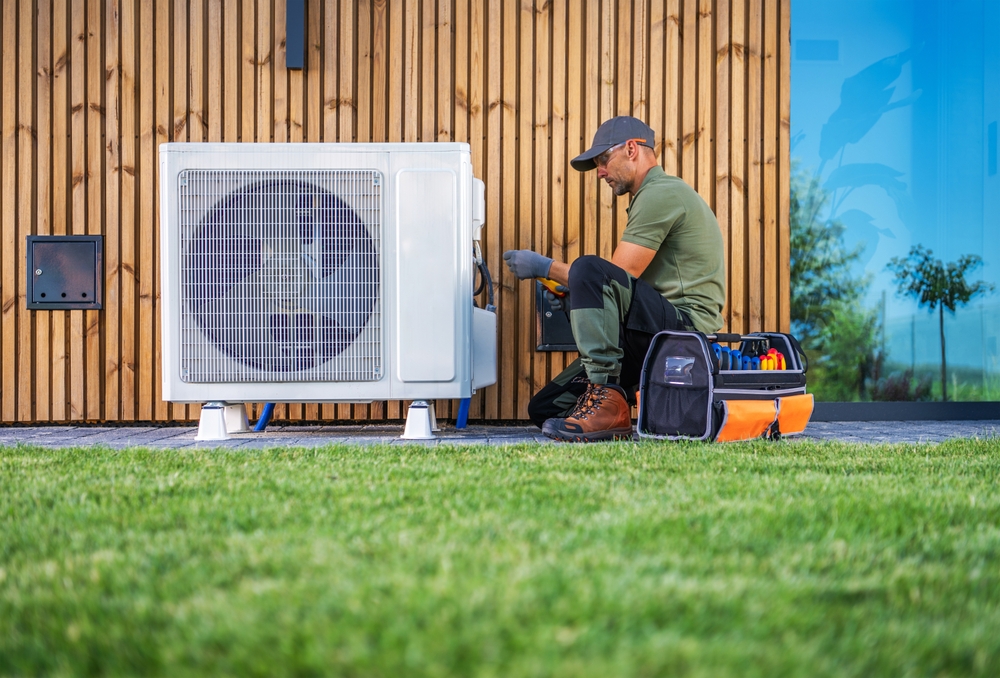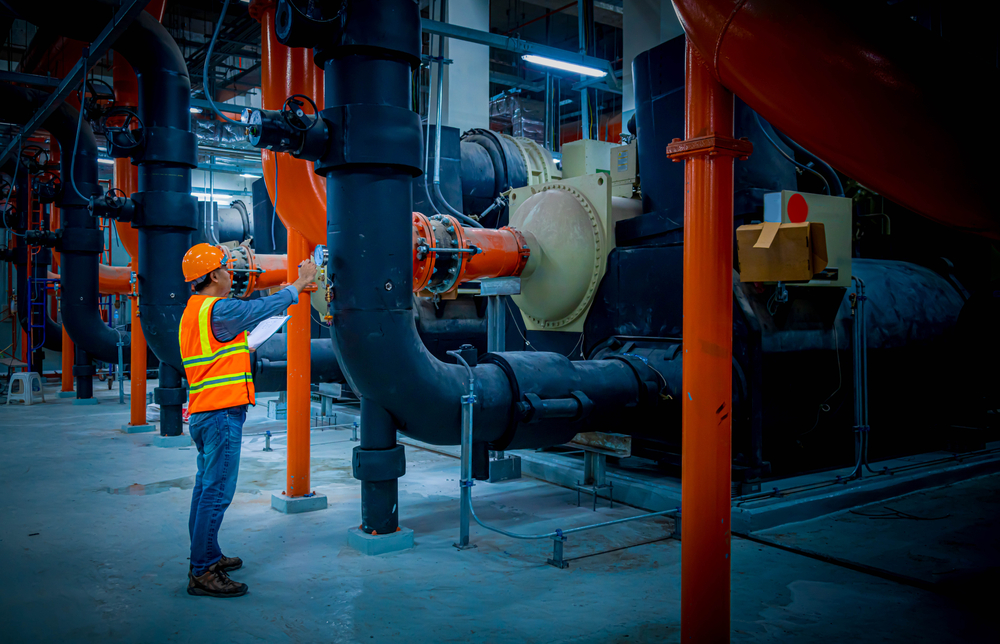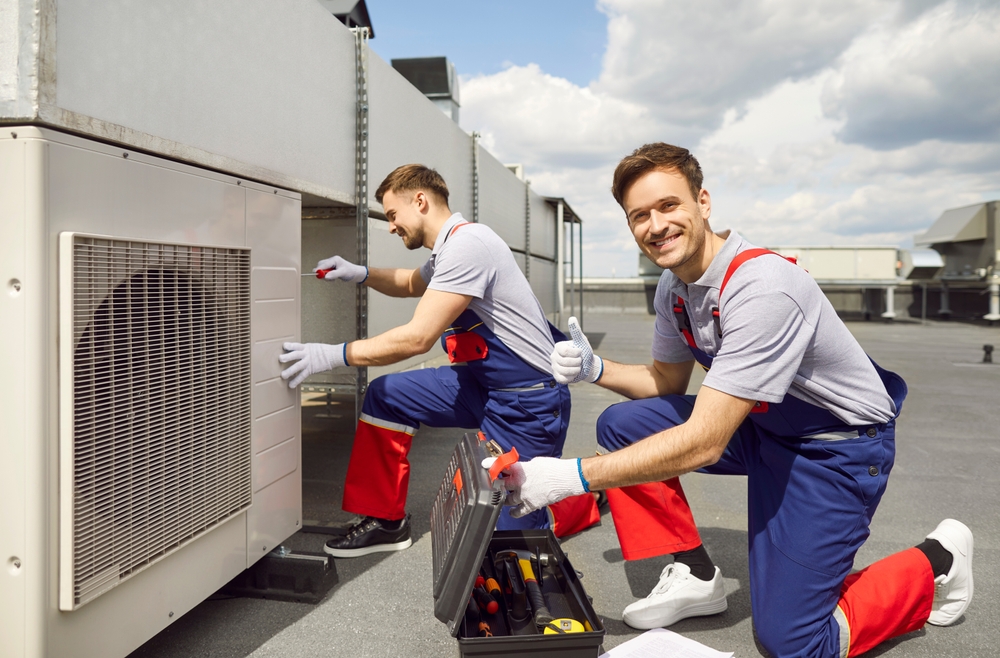Every occupant expects consistent comfort, clean air and energy savings. HVAC maintenance is the systematic programme of inspections, cleaning and repairs that keeps heating, ventilation and air conditioning systems—and the hvac equipment they rely on—running at peak performance. Whether you’re managing a small commercial property or a large residential development, a proactive maintenance plan avoids costly breakdowns, protects indoor air quality all year round, and helps maintain the system’s performance for optimal efficiency.
HVAC maintenance encompasses all routine tasks designed to preserve the operational health of a heating, ventilation and air conditioning system. The goal is simple: prevent minor faults from escalating into extensive HVAC repair projects. Core activities include:
- Replacing or cleaning air filters to maintain airflow
- Washing evaporator coil and condenser coils to sustain heat exchange efficiency and prevent mold or bacteria growth
- Checking refrigerant pressure and repairing leaks promptly
- Inspecting electrical connections and tightening loose wiring
- Lubricating moving parts such as fan motors, bearings and other components to prevent wear and tear
- Calibrating thermostats and testing safety controls
A professional technician or HVAC technician should perform these tasks to ensure the system is working correctly and to identify potential issues before they become major issues. This combination of preventive servicing and timely fixes, guided by an HVAC maintenance checklist, ensures your system remains reliable through peak summer and winter demands. Professional HVAC maintenance extends the system’s lifespan and provides peace of mind. Using a HVAC maintenance checklist will help here too.
Introduction to HVAC
Heating, Ventilation, and Air Conditioning (HVAC) systems are the backbone of comfort and air quality in today’s buildings. Whether in homes, offices, or commercial spaces, a well maintained HVAC system is essential for providing efficient heating and cooling, ensuring clean indoor air, and keeping energy costs under control. These systems work tirelessly year round to create a healthy and comfortable environment, filtering out dust and other particles while regulating temperature and humidity.
Regular HVAC maintenance is not just a recommendation—it’s a necessity. Without routine care, even the most advanced heating ventilation and air conditioning systems can suffer from reduced efficiency, higher operational costs, and unexpected breakdowns. Neglecting maintenance can lead to costly repairs, poor air quality, and a shortened system lifespan. By focusing on key components such as air filters, coils, and electrical connections, building owners and facilities management personnel can protect their investment, improve energy efficiency, and enjoy the full benefits of a reliable HVAC system. In the following sections, we’ll explore how proper maintenance keeps your system running smoothly and why it’s essential for every building.
The Benefits of Regular HVAC Servicing
Investing in professional HVAC maintenance software and servicing delivers measurable returns across several dimensions, including reducing maintenance costs:
2.1 Improved Energy Efficiency
Regular HVAC servicing ensures your system runs at peak efficiency, which translates to lower energy bills. By keeping components clean and well-maintained, your system uses less power to achieve the desired temperature, saving more energy and maintaining the same level of comfort throughout your space. Improved system performance is another key benefit, as routine checks and tune-ups help your HVAC operate reliably and efficiently. Additionally, regular maintenance can help reduce the environmental impact of HVAC systems by lowering greenhouse gas emissions and contribute to mitigating climate change.
2.2 Fewer Emergency Repairs
Routine maintenance helps identify and address minor issues before they escalate into major problems, reducing the likelihood of unexpected breakdowns and costly repair bills. This proactive approach not only extends the lifespan of your equipment but also minimises disruptions to your daily routine.
2.3 Enhanced Indoor Air Quality
Professional servicing includes cleaning and replacing filters, removing dust, and checking for mold or other contaminants. This results in healthier breathing zones for occupants. Regular maintenance also reduces the risk of respiratory problems by minimising indoor pollutants that can trigger asthma, allergies, and other respiratory conditions.
2.4 Lower Long-Term Costs
Preventive maintenance software reduces the risk of major failures and extends the life of your HVAC system, leading to significant savings on both repair and replacement expenses. By keeping maintenance costs under control, you can better manage your budget, especially during periods of inflation and supply chain challenges.
1. Energy Efficiency and Cost Savings
Clean filters and coils reduce system strain, lowering electricity and gas consumption. Well-calibrated controls prevent overcooling or overheating, cutting energy waste and shrinking operational costs.
2. Fewer Emergency Repairs
Routine maintenance catches worn belts, refrigerant leaks and electrical faults before they trigger system shutdowns. Predictable servicing budgets replace unpredictable, high-cost repair bills.
3. Improved Indoor Air Quality
Dust, pollen and mould spores accumulate in filters and ductwork. Regular cleaning removes these contaminants, controlling allergens and stabilising humidity for healthier breathing zones.
4. Extended Equipment Lifespan
Lubricated bearings, secure fittings and clean heat exchangers reduce wear. A robust maintenance plan can add years to compressor, fan and motor service life.
5. Regulatory Compliance and Warranty Protection
Documented service histories demonstrate adherence to building regulations, insurance requirements and manufacturer warranty terms. This reduces liability and safeguards asset value.
Core Components of an HVAC Maintenance Programme
A full-scale maintenance regimen leaves no component unchecked: ensuring every HVAC unit and piece of HVAC equipment is properly maintained. A qualified technician should perform these checks for optimal results.
Air Filters and Ductwork
- Inspect filters every month and replace or clean them every 1–3 months.
- Schedule annual duct inspections and cleaning to expel accumulated dust and debris.
Coils, Fins and Condensers
- Clean evaporator and condenser coils bi-annually to prevent fouling.
- Straighten bent fins to optimise airflow and heat transfer efficiency.
Refrigerant Circuit
- Measure refrigerant levels and pressures against manufacturer specifications.
- Locate and seal leaks immediately to maintain cooling capacity and comply with environmental standards.
Electrical Systems
- Test voltage and current on motors and compressors.
- Tighten loose terminals, replace worn relay contacts and confirm proper ground connections.
Mechanical Components
- Lubricate bearings, shafts and fan motors to reduce friction.
- Check belts and pulleys for wear; adjust or replace to maintain correct tension.
Controls and Sensors
- Calibrate thermostats and verify accurate temperature readings.
- Test safety switches, pressure relief valves and emergency shutdown devices.
Drainage and Condensate Management
- Clear condensate pans and drain lines to prevent water overflow.
- Inspect for corrosion or blockages that can damage equipment or building structures.
Air Conditioning Maintenance
Air conditioning maintenance is a critical part of keeping your HVAC system operating at peak efficiency, especially during the hottest months of the year. A well maintained air conditioning unit not only delivers consistent cooling but also helps control humidity and maintain healthy indoor air quality. Routine maintenance tasks for air conditioning systems include cleaning or replacing air filters, washing the evaporator and condenser coils, and ensuring the outdoor condenser unit is free from debris and obstructions.
Regularly checking refrigerant levels and inspecting for leaks is essential to prevent a drop in cooling performance and avoid costly repairs. HVAC technicians also examine electrical components, tighten loose connections, and lubricate moving parts to reduce wear and tear. By scheduling professional air conditioning maintenance before peak seasons, you can lower energy bills, extend the lifespan of your equipment, and minimise the risk of unexpected breakdowns. Ultimately, proactive care ensures your cooling system remains efficient, reliable, and ready to handle increased demand when you need it most.
Best Practices for HVAC Maintenance
Adopt these guidelines to ensure your plan remains effective and cost-efficient:
- Schedule Bi-Annual Service Visits Perform a pre-summer check for air conditioning and a pre-winter inspection for heating units.
- Maintain Detailed Records Log dates, findings, replaced parts and performance metrics. This history simplifies troubleshooting and budget forecasting.
- Train On-Site Staff Empower facilities teams to handle basic tasks such as filter swaps and thermostat adjustments between professional visits.
- Invest in Quality Parts Use OEM filters, belts and lubricants. Cutting corners on consumables often leads to inefficiencies and premature component failures.
- Monitor Performance Indicators Track energy use, airflow rates and noise levels. Sudden deviations often signal that professional servicing is overdue.
HVAC Service and Repair
Even with the best maintenance practices, HVAC systems may occasionally require professional service and repair. Recognizing the early warning signs—such as strange noises, weak airflow, inconsistent temperatures, or sudden spikes in energy bills—can help you address minor issues before they escalate into major, costly repairs. Prompt attention to these problems not only restores comfort but also protects the system’s performance and prevents further damage to key components.
Professional HVAC service goes beyond routine maintenance by diagnosing and repairing faults in various components, from electrical connections to refrigerant circuits. Experienced HVAC technicians use specialized tools and expertise to identify the root cause of issues, ensuring repairs are completed safely and effectively. Relying on a trusted HVAC service provider means you benefit from timely interventions, transparent pricing, and access to genuine replacement parts. By prioritizing both regular maintenance and responsive repair services, you can keep your heating and cooling system running smoothly, avoid expensive repairs, and maintain a comfortable, energy-efficient environment year round.
Selecting an HVAC Maintenance Service
Choosing the right provider hinges on expertise, transparency and responsiveness:
- Verify Accreditation Look for certifications from recognised bodies like the Building Engineering Services Association (BESA).
- Compare Service Contracts Opt for plans covering preventive maintenance, emergency call-outs and genuine parts replacement.
- Confirm Response Times Especially during heatwaves or cold snaps, guaranteed arrival windows for urgent repairs are essential.
- Demand Transparent Pricing A clear breakdown of labour, parts and call-out fees prevents unwelcome surprises on your invoice.
- Review Client Testimonials Seek references that attest to punctuality, professionalism and quality of workmanship.
How to Maintain Heating and Air Conditioning Between Services
On-site teams can perform simple checks to support professional engineers:
- Replace or clean filters monthly in peak seasons.
- Keep the outdoor condenser clear of leaves, debris and vegetation.
- Listen for unusual sounds or vibrations in compressors and fans.
- Ensure vents and registers remain unblocked.
- Note temperature inconsistencies or rapid cycling and report them promptly.
These tasks help sustain system efficiency and reduce reliance on emergency HVAC system repair.
Leveraging Velappity for Smarter Servicing
Technology transforms HVAC servicing from reactive firefighting into proactive management. As HVAC maintenance software, Velappity provides:
- Automated scheduling of routine checks
- Centralised equipment registers and asset histories
- Inspection and asset monitoring jobs completed by inspectors on-site via the Velappity app
By integrating Velappity into your maintenance plan, you eliminate paperwork, reduce human error and turn servicing into a data-driven process that maximises uptime and cost-effectiveness.
Conclusion
What is HVAC maintenance if not the backbone of system reliability, energy efficiency and indoor comfort? From basic filter changes to advanced refrigerant diagnostics, a disciplined approach prolongs equipment life and reduces running costs. By adopting industry best practices, choosing accredited technicians and empowering your team with Velappity, you ensure that every visit, task and record keeps your heating, cooling and ventilation systems performing at their best.




